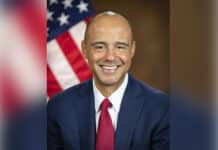(Center of the American Experiment) — The Minnesota State Colleges and Universities system — our state’s largest higher education system, with 54 campuses — is embarking on a radical experiment. It is implementing a new plan, Equity 2030, that pledges to “eliminate” all academic gaps among students of different racial and ethnic groups by 2030.
Under the plan, “equity” means not fairness, but its opposite: “the proportional distribution of desirable outcomes” across demographic groups. Equity 2030 will make balancing student outcomes by skin color, not academic excellence and enhanced learning, the system’s No. 1 priority.
Equity 2030 commits faculty to find a way to engineer identical group outcomes on measures ranging from student “course success” and retention to participation in honors courses and postgraduate outcomes, according to Minnesota State’s “Equity by Design Campus Team Toolkit.” Teachers who don’t make progress toward this risk being labeled racist and may incur daunting job consequences.
As any parent can tell you, it’s impossible to dictate identical academic performance, even among the children of one family. But Minnesota State’s utopian plan faces a particularly sobering reality:
In 2021, among those who took the Minnesota Comprehensive Assessments, 63% of our state’s white high school students could read at grade level, along with 62% of Asian high school students. Among Black, Hispanic and American Indian students, the figures were 36%, 37% and 29%, respectively.
About one third of students at Minnesota State’s 33 institutions — which include universities like St. Cloud State University and two-year institutions like Normandale Community College and Hennepin Technical College — are members of minority groups.
So why have Minnesota State Chancellor Devinder Malhotra and his Office of Equity and Inclusion publicly vowed to erase all group differentials in academic achievement? Because they believe the gaps’ sole cause is white racism, which they intend to root out across the system.
“Institutional racism,” declares the tool kit, “is an entrenched characteristic of colleges and universities that has to be dismantled with strategies that are color conscious, informed by critical race theory and systemic.” (Only whites can be racist, according to the tool kit.)
The Equity 2030 plan’s fundamental premise flies in the face of common sense. It maintains that students bear no responsibility for their own academic success. Students’ academic preparation, motivation and study habits are said to play no role in outcomes, which — if substandard — are blamed entirely on racially discriminatory teachers and schools.
The key to erasing all performance gaps, according to the system’s equity planners, is to “shift accountability to the institution rather than to the students,” and to re-educate all Minnesota State personnel to be “color-conscious” rather than “color-blind.”
Yet Minnesota State faculty face real-world facts that expose this theory’s fallacy. Some students in their science and math courses can’t add decimals, work with fractions, or read charts and graphs, teachers report. Some don’t read their assignments, or understand them if they do. Some are working night jobs and don’t have time to prepare.
But the tool kit warns that “deficit-minded phrases” like these aren’t consistent with the “equity mindset,” and are now off-limits as racist.
Equity 2030’s implementation is at different stages across the Minnesota State system. The tool kit recommends that each institution begin the process by naming a team of “change agents” to “conduct a deep dive into analyzing equity gaps.”
These teams’ orientation does not focus on classroom practices with a track record of improving students’ algebra skills or writing ability. Instead, team members are pressured to confess their own “racialized assumptions,” in cultlike struggle sessions.
The tool kit provides no evidence that the “equity” approach it imposes has actually improved student performance anywhere. Instead, it is all about getting the numbers right on paper.
One way to do this, of course, is to lower or eliminate academic standards, so that grades are no longer based on the actual quality of a student’s performance. That’s what Minneapolis public high schools have done in their quest for “equity.”
In 2020, for example, at Roosevelt High School, black students’ graduation rate was 77%, but in 2019 only 23% of the school’s Black students who took state tests were proficient in reading and 10% in math. Hispanic students’ graduation rate was 74%, but in 2019 a mere 17% of those tested were proficient in reading and 18% in math.
“Equity” — equal outcomes — has been achieved on paper, but at a devastating cost: a high school diploma has become essentially meaningless.
Minnesota State equity and inclusion czars are irrationally attempting to blame faculty for longstanding racial and ethnic academic differentials, while letting Minnesota’s K-12 schools — and students and their families — off the hook.
In fact, our K-12 schools have failed students, particularly minority students, for decades, often in the name of equity. Low expectations, the elevation of political fads over basic skills, and widespread social promotion have greatly exacerbated the problem.
Minnesota State could be helping young people learn the key to success in school and life: hard work, high standards, sacrifice and self-discipline. Instead, by inviting them to blame the system for their difficulties, it’s just setting them up for another rung of failure.
This opinion piece was originally published in the Star Tribune.
Katherine Kersten
Katherine Kersten, a writer and attorney, is a Senior Policy Fellow at Center of the American Experiment. She served as a Metro columnist for the Star Tribune (Minneapolis) from 2005 to 2008 and as an opinion columnist for the paper for 15 years between 1996 and 2013. She was a founding director of the Center and served as its chair from 1996 to 1998.


















